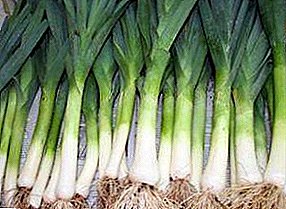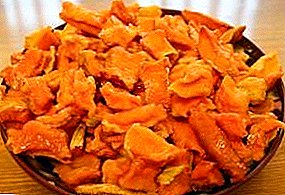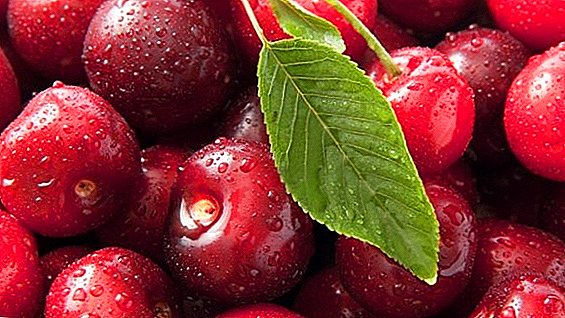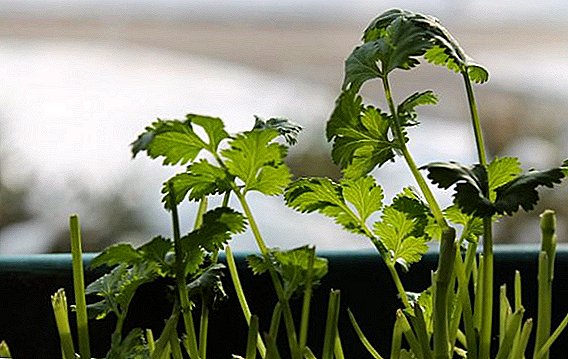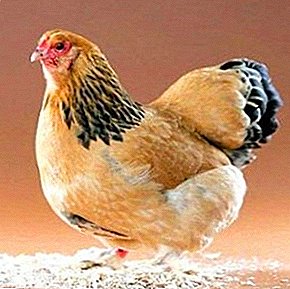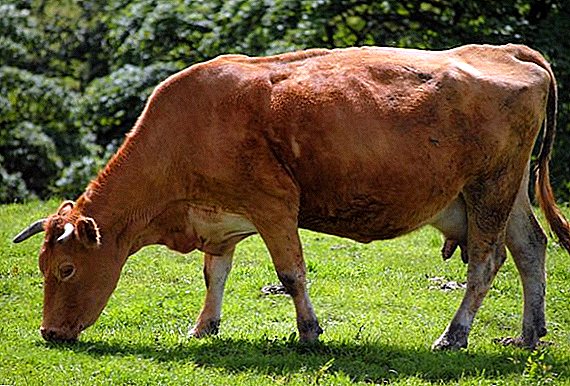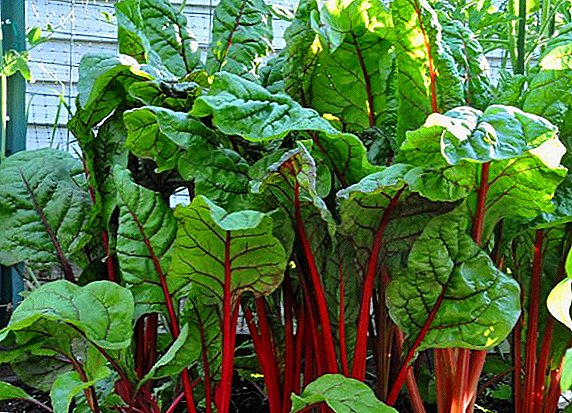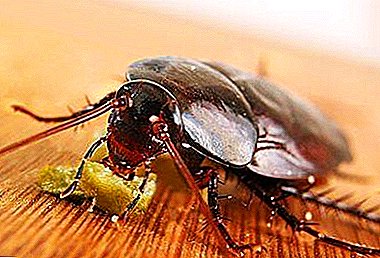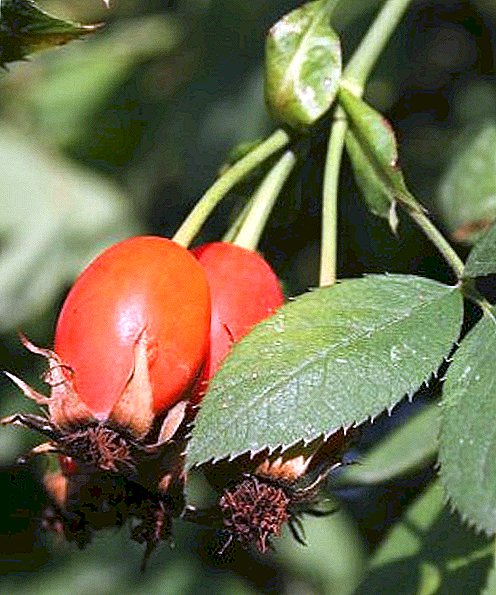 Rosehip is a beautiful and very useful plant that is often used in traditional medicine. In our article we will tell about one of its varieties - dog rose, about its medicinal properties and rules of cultivation.
Rosehip is a beautiful and very useful plant that is often used in traditional medicine. In our article we will tell about one of its varieties - dog rose, about its medicinal properties and rules of cultivation.
Botanical description
The dog rose was first described by Karl Linnaeus in 1753, and his the international scientific name sounds in Latin like Rosa canina L. This species belongs to the Rosaceae family.
Important! Different types of wild rose can have different medicinal properties, so before picking or purchasing, be sure to specify which variety you are offered.
The plant is represented by a large shrub capable of growing 2 m in height. He possesses arched branches; their surface is covered with a brown or greenish crust, on which are numerous durable crescent-shaped spikes.
The bush has single-pinnate leaves, consisting of 5-7 large elliptical leaves, up to 5 cm in length. Most often there are single flowers, but sometimes they are collected in several pieces and are located on pedicels, about 3 cm long.  The diameter of large flowers can reach 8 cm, they are painted in white or pink.
The diameter of large flowers can reach 8 cm, they are painted in white or pink.
The fruits of the shrub are small, round, sometimes elongate-ovate. They have a light or bright red color. Flowering occurs in June, and ripening occurs in September.
It will be useful for you to learn how to distinguish a rose from a wild rose.
Distribution and ecology
The dog rose is widespread in Europe, West Asia and North Africa. Places of its growth are sparse forests, glades, clearings, treeless shrub and grassy slopes, banks of streams and rivers. It is also found on the roadsides, in desert areas.
Chemical composition
Rosehips contain a large amount:
- tannins;
- malic and citric acid;
- essential oils;
- vitamins A, E, C, PP and K, vitamins of group B;
- phosphorus;
- magnesium;
- zinc;
- manganese;
- sodium;
- chromium;
- potassium.

Use in traditional medicine
Due to the unique composition of the plant is actively used in medicine. Consider what properties dogrose has and how to make the medicine from it yourself.
Did you know? In the XVIII and XIX centuries, this type of dog rose was used as a remedy for dog bites, which is why it acquired such a name.
Medicinal properties
Quite often, wild rose is used to fight colds. Due to the high content of vitamin C in the broth, you can prevent dehydration, reduce the temperature, as well as destroy viruses.
Rose hip preparations help strengthen the immune system and improve the production of antibodies. They are used for the treatment of such diseases:
- whooping cough;
- scarlet fever;
- pneumonia;
- diphtheria;
- angina.
Rosehip has an excellent choleretic property, and is also very useful for blood formation. Due to the presence in the composition of vitamin K, improves the synthesis of prothrombin, necessary for the normalization of blood clotting.  This component allows you to quickly stop uterine bleeding.
This component allows you to quickly stop uterine bleeding.
The presence in the composition of vitamin P helps to strengthen blood vessels, and vitamins B2 and B1 are actively involved in the production of blood. Dogrose can prevent atherosclerosis, because thanks to its components, the blood vessels are cleared of cholesterol.
Contribute to the reduction of "bad" cholesterol consumption: apple or beet juice, tomatoes, zucchini, carrots, ginger, iceberg lettuce, plums, corn, dried kelp, grapefruit, watermelon and cashews.
In addition, the plant has the following properties:
- antiviral;
- wound healing;
- immunostimulating;
- regenerating;
- anti-inflammatory.
A decoction of rhizomes is able to dissolve stones in the body, and tea from leaves can be taken to relieve pain and improve gastric motility.
Infusion
Properly prepared infusion is recommended for use in diseases of the bladder, kidneys, liver ailments and biliary tract ailments. Also, the infusion can be drunk for general body strengthening.
For its preparation you will need:
- fruits of dog rose;
- 500 ml of water;
- 20 grams of sugar.
 The fruits are ground to a powder, after which 2 teaspoons of the obtained ingredient is poured 500 ml of hot water. Infuse the mixture for 4-5 hours, then filter and add granulated sugar. Consume 100 ml three times a day before eating.
The fruits are ground to a powder, after which 2 teaspoons of the obtained ingredient is poured 500 ml of hot water. Infuse the mixture for 4-5 hours, then filter and add granulated sugar. Consume 100 ml three times a day before eating.Read more about the beneficial properties of rose hips, as well as what is useful and how to make rosehip extract.
Use in gardening
Except for medicinal purposes, wild rose is actively used as an ornamental plant. Often it is planted in well-lit areas or along fences to create a shadow and thereby get a hedge.
Also, it is possible to plant cultural roses on a dog rose - such a plant will have a beautiful and original look.
How to distinguish a dog rose from the usual
Unfortunately, because of the high availability and cheapness of a dog rose, sellers often give it up for a regular (May) dog rose. The main difference of a dog rose is that it has small bracts that are pressed to the branch. In a normal dog rose, they should stick out.  May (normal) dog rose However, sellers often completely break them off before selling the plant, therefore, it is problematic to determine the variety.
May (normal) dog rose However, sellers often completely break them off before selling the plant, therefore, it is problematic to determine the variety.
We recommend to read about the cultivation of wild rose on the site and varieties of large-fruited wild rose, as well as the grafting of roses on the wild rose.
Growing at home
If you decide to grow your own wild rose, the following information will be useful to you.
Choosing a place
The choice of planting site is of great importance for the further development of the plant. The dog rose feels well in sunny, well-lit places, so you should not plant it in a shaded area. The plant does not like strong moisture, but it also does not like dry air - therefore the indicator should be average.  Rosehip is a cross-pollinated plant, so several bushes should be planted nearby.
Rosehip is a cross-pollinated plant, so several bushes should be planted nearby.
Important! Wetlands are not suitable for disembarkation, as this may lead to decay of the root system.
Planting and breeding
The plant propagates by the seed method or with the help of seedlings. Consider these methods in more detail.
Seeds
Seed collection is recommended in August - for this purpose unripe fruits with brown color will do. This period is the most successful, since the seed has a not too hard shell and, accordingly, it will germinate well.
Both spring and autumn are suitable for disembarkation, but it is better to give preference to the second variant. It is recommended to land in October.  Immature fruits of dog rose. Procedure:
Immature fruits of dog rose. Procedure:
- It needs to be done at the chosen place of the furrow.
- Sow seeds in rows.
- Then dust the rows with humus and sawdust, leaving a small distance so that chopper can pass between them.
- For better germination with the arrival of spring, it is necessary to install a frame and pull polyethylene on it.
- As soon as you notice the first two leaves on the seedlings, it is worthwhile to arrange them.
If planting is planned for spring, stratification of seeds is necessarily carried out for their best germination. After the seeds are extracted from the fruit, they must be mixed with peat and sand (1 to 4).
This mixture is placed in a box and stored until March in a cool place at a temperature of 2-3 ° C. During the winter months, the mixture is stirred from time to time.
Seedlings
When choosing such a method, it is best to plant in the fall. Ideal for this procedure is October or November.
- The planting hole is dug - its depth should be about 20 cm.
- If the soil is with high acidity, it is necessary to make lime fertilizer, add compost and rotted manure.
We advise you to read how to make compost with your own hands and in garbage bags, as well as how to build a compost pit.
- Pruning of seedlings is carried out - the length of thick branches should not exceed 10 cm. You can also shorten the roots to 15-20 cm.
- The root part of the plant is immersed in the clay mash, the roots are straightened and the landing is carried out in the prepared hole. The neck of the root system should be located 5 cm below the ground level.
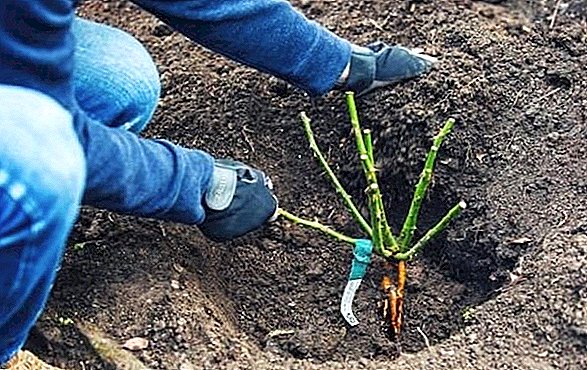
- As soon as planting is completed, it is necessary to water the seedling with water and sprinkle the surface using sawdust or peat.
Watering
The plant tolerates dry weather, and therefore does not need frequent watering. During the dry period, you will need 2-3 buckets of water to irrigate one young bush, and 5 for fruit-bearing ones. Watering is done 3-4 times throughout the season.
Pruning
After 2-3 seasons after disembarkation, the bush is pruned. To improve productivity, form a shrub containing only 15-20 branches. It is good if the age of the branches is different, but not more than 7 years, since after this period the branches start to bear fruit badly.
Usually pruning is done in spring. Many sources of information indicate that pruning should be done in the fall, after the bush has dropped the leaves, but this is not necessary. The fact is that fresh sections of the plant do not tolerate frosts poorly and the bush may die.
Did you know? In ancient times it was believed that wild rose helps to return ardent feelings to loving people, and if you scatter plant petals around the house, it will help get rid of quarrels in the family and bring harmony and tranquility to the house.
When doing pruning, do not overdo it - if you shorten the shrub too much, next year you will find a lot of young plants that will not yield crops.
Harvesting and storage of raw materials
Fruits are harvested in autumn, during full ripening, before the onset of frost. If the fruit is frozen, they lose their vitamins and are easily destroyed during harvest. For picking off fruits, you should wear protective mittens and sleeves. The fabric should be tight, you can use a tarp. Also wear an apron, which has large pockets.  After collecting the raw materials must be dried at a temperature of 80-90 ° C. For this, there are special ventilated dryers.
After collecting the raw materials must be dried at a temperature of 80-90 ° C. For this, there are special ventilated dryers.
Fruits need to be expanded in them in a thin layer and constantly mixed. To determine the end of the process can be the fragility of the fetus.
You will be interested to read how to dry rose hips at home.
Dried berries are packed in paper packs or glassware and stored in a dry place for 2 years.
Rosehip dog - a unique plant that attracts attention not only beautiful, but also the presence of a large number of useful properties. If desired, you can grow shrubs yourself - in this case, you can at any time use infusions based on it, which contribute to the overall strengthening of the immune system and help get rid of many diseases.



